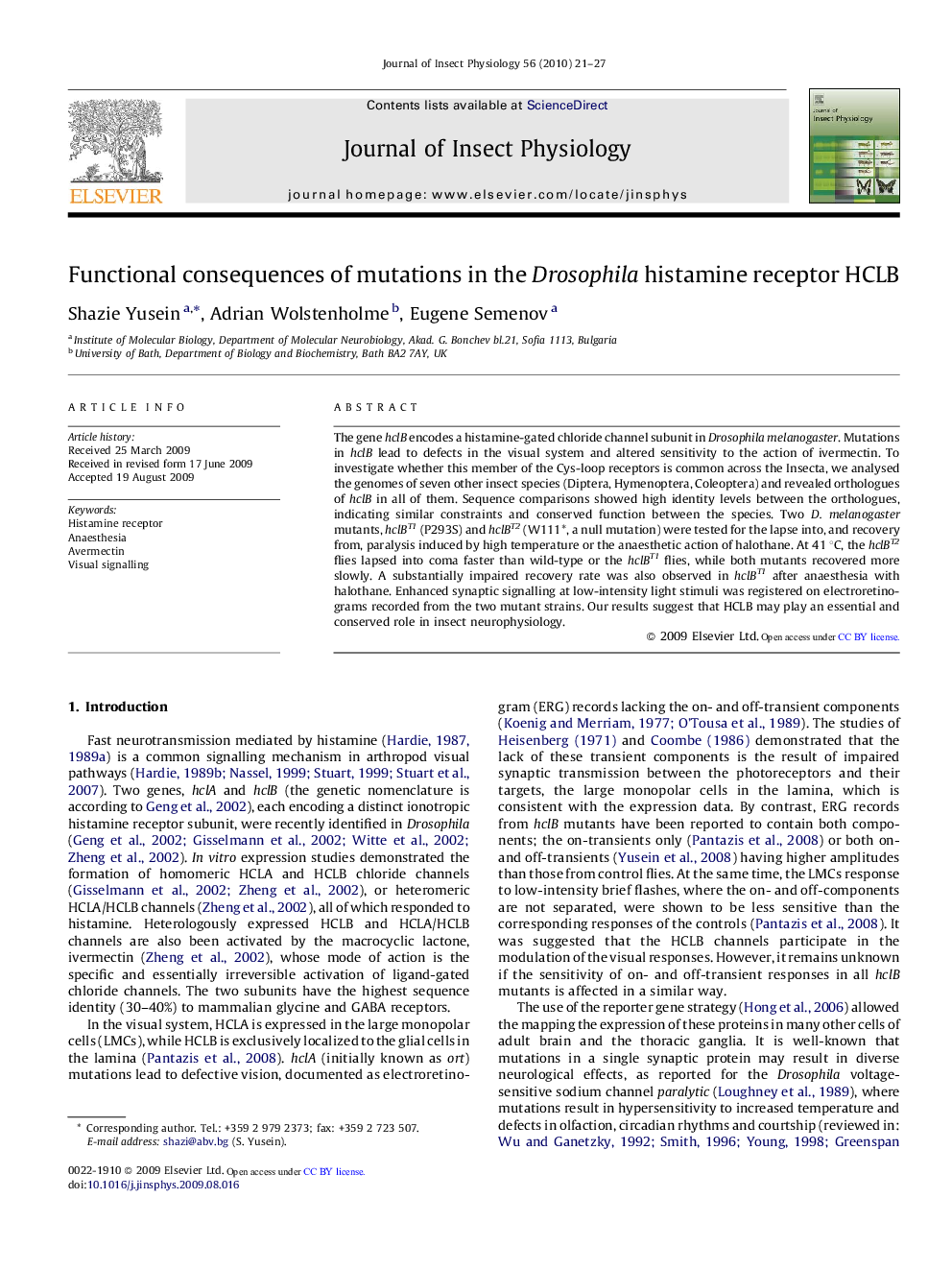| Article ID | Journal | Published Year | Pages | File Type |
|---|---|---|---|---|
| 5922346 | Journal of Insect Physiology | 2010 | 7 Pages |
The gene hclB encodes a histamine-gated chloride channel subunit in Drosophila melanogaster. Mutations in hclB lead to defects in the visual system and altered sensitivity to the action of ivermectin. To investigate whether this member of the Cys-loop receptors is common across the Insecta, we analysed the genomes of seven other insect species (Diptera, Hymenoptera, Coleoptera) and revealed orthologues of hclB in all of them. Sequence comparisons showed high identity levels between the orthologues, indicating similar constraints and conserved function between the species. Two D. melanogaster mutants, hclBT1 (P293S) and hclBT2 (W111*, a null mutation) were tested for the lapse into, and recovery from, paralysis induced by high temperature or the anaesthetic action of halothane. At 41 °C, the hclBT2 flies lapsed into coma faster than wild-type or the hclBT1 flies, while both mutants recovered more slowly. A substantially impaired recovery rate was also observed in hclBT1 after anaesthesia with halothane. Enhanced synaptic signalling at low-intensity light stimuli was registered on electroretinograms recorded from the two mutant strains. Our results suggest that HCLB may play an essential and conserved role in insect neurophysiology.
